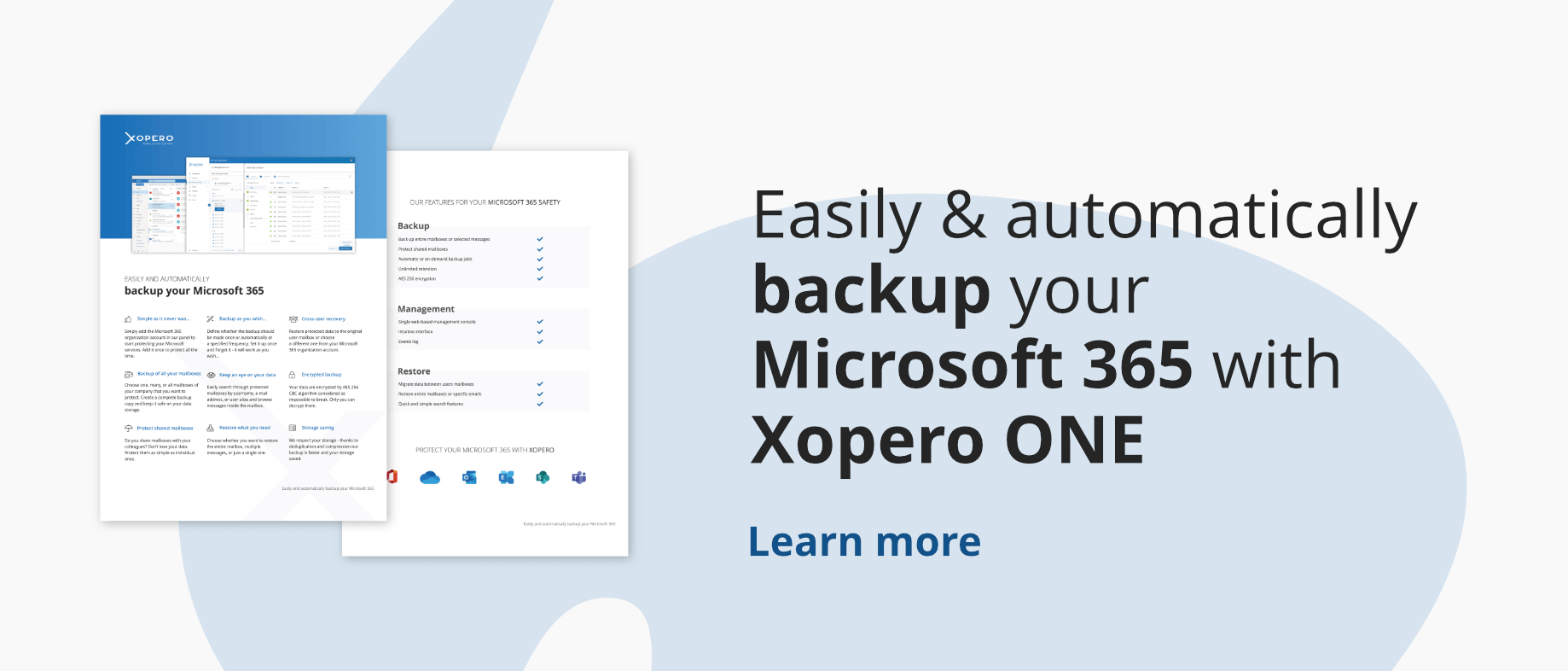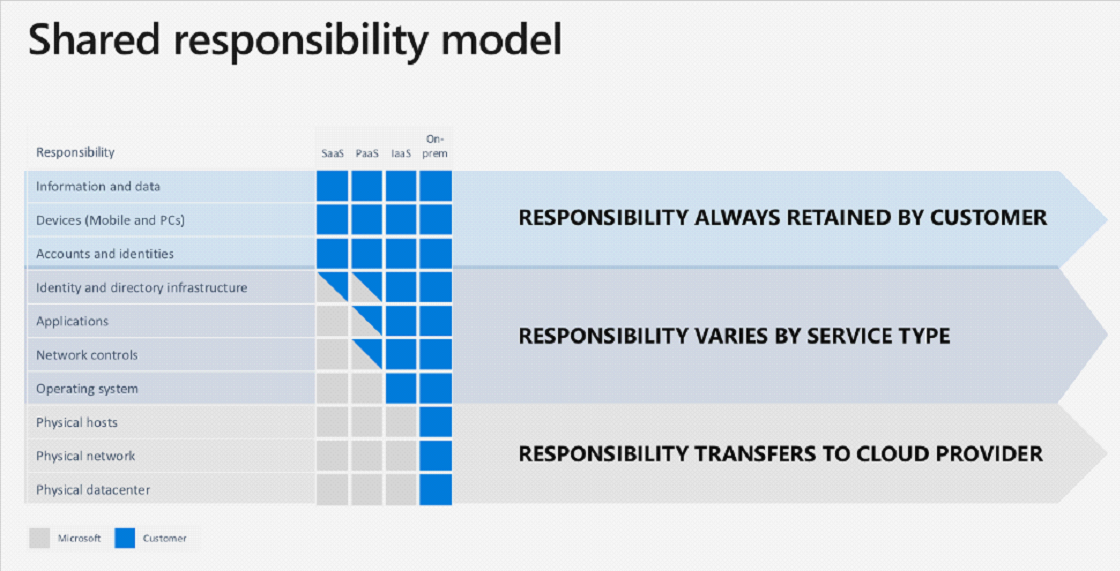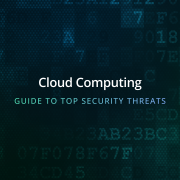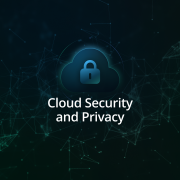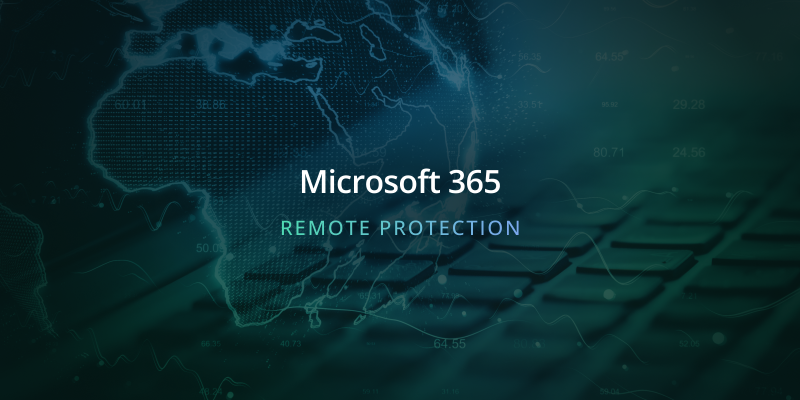
How to protect your remote Microsoft Office 365 data
The main lesson from pandemic for businesses is to keep agile. One of the solutions was to change the work model, to protect their employees, allowing (or forcing) them to work from home, not from the office. It was possible mainly thanks to available cloud services like Office 365. But this change sprouted a lot of problems with the protection of business-sensitive data. It is proved that when it comes to business security, the biggest threat is human errors. So you might be surprised but not well enough educated employees may put your company’s data in danger – especially while working from home. How to protect then your remote Microsoft Office 365 data best?
Why there is a need to protect remote Microsoft Office 365 data
While your team is working from the office, you have control over how your employees use the company’s network, it’s resources, and many more. When they transfer from working in the office to working from home, you lose almost all of that control.
While working from home, your employees are probably connected to the home router, which in most cases is not protected well enough. You also can’t stop them from connecting to cloud services through public wi-fi. This can lead to security breaches, as this type of connection is known to be the target of many malware attacks. To add to your misery, your employees’ devices probably don’t have crucial security features you require in your work network.
If it’s not enough problems yet. Think about a very banal situation where by accident some important data gets deleted because one of the workers’ kids wanted to play something on the PC.
There are many risk factors in the home office scenario. Now the security of your organization’s data lies not only in your hands but also in your employees’ hands. So it’s important to educate them about risks they might encounter, and also how to prevent them. But what can you do to protect your company data?
What Microsoft Office 365 data do you need to protect?
First I will answer the question, what data you need to protect. The answer is simple: all of the critical ones! In this article we will focus on protecting Office 365 data.
As you might know Office 365 provides you with many services that can help you run your business remotely. Every one of them can, and should be protected.
One of the services provided by Office 365 that is used on a daily basis by most companies to communicate is Microsoft Exchange Online. Exchange Online allows you to send and receive emails not only through Outlook on your computer, but at any device with a browser. The second, similarly important one is OneDrive for business which is a cloud storage. It allows you to access your data from the web, and share documents and files across your organization, or if needed outside your organization.
Another Office 365 service you need to protect is Microsoft Teams. It allows your users to collaborate with each other. They can create groups, channels, private chats, meetings, and send files on the fly. Almost all of those activities can be done with people inside and outside your organization.
Another component of Office 365 is SharePoint Online which is document management software used to share documents not only inside your organization, but also outside of it.
Now you know what data you need to protect in Office 365, let’s see what Microsoft provides to keep them safe.
How Microsoft protect your data in Office 365
Let’s look at the table, showing what exactly Microsoft is responsible for, and what are your responsibilities, as an end user.
Common misunderstanding is that Microsoft is responsible for protecting your data. But from where comes this misunderstanding? Well, technically Microsoft protects your data, but only when problems happen on their side. This company shares their services in the so-called Shared Responsibility Model. Let’s dig a little deeper, how does the Shared Responsibility Model work, and what responsibilities lay on which side.
Office 365 is a cloud service, so it falls into Software as a Service (SaaS) category. As we can see from this graph, no matter what happens you are responsible for protecting your:
- Data
- Users accounts
- Endpoints
- Access management
Clarifying when Microsoft is responsible for protecting your data. Microsoft is responsible for:
- Hardware failure
- Server-side software failure
- Data center power outage
- Natural disasters
The list of things Microsoft is responsible for is quite short and is mainly related to infrastructure-related threads. Putting it in other words, Microsoft is responsible for protecting hardware, virtualization, OS, network and application. And how Microsoft makes sure your data is protected from such threads? They replicate your data across at least two data centers, placed in different regions. This solution provides that in case of any event of failure on Microsoft side your data will be recoverable.
How to protect your remote Office 365 data with Xopero ONE
No matter whether you work from home, or you work from the office, you need to backup your data thoroughly. Xopero is here to help you protect your essential data. Xopero ensures data protection offering the following features:
- Protect your Microsoft 365 data in minutes – add your organization, choose users and data to protect, storage (on-premise or cloud) and submit it to predefined or customized backup plan.
- Cross-user recovery – Restore protected data to the original user destination or choose a different one from your Microsoft 365 suite
- Central, user-friendly management #1 – simple, the most intuitive central management web console. Thanks to the most user-friendly interface setting up efficient backup and recovering data are the simplest ever.
- Unlimited retention – Store your data as long as you need and take advantage of multiple backup rotation schemes – FIFO, Grandfather-Father-Son, Forever Incremental – choose yours.
- Granular recovery – fast, and point-in-time recovery of all or only selected types of data – folders, mailboxes, documents or even particular emails.
And much more…


